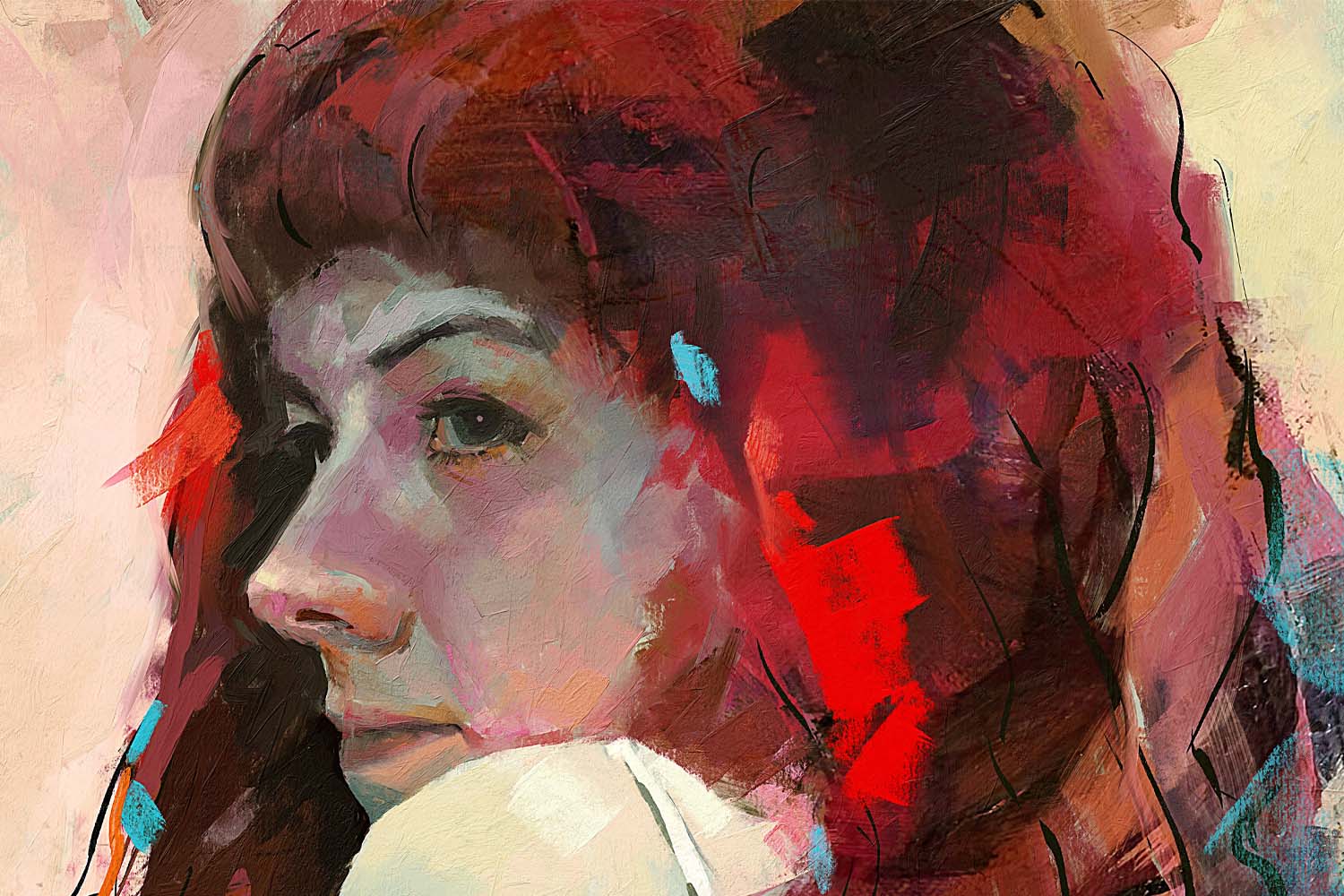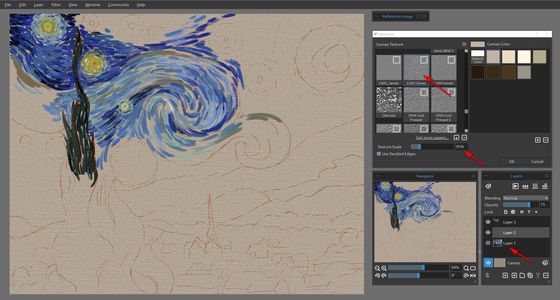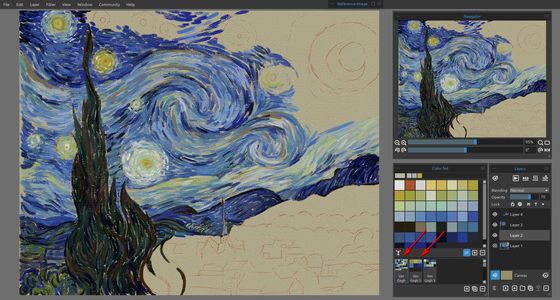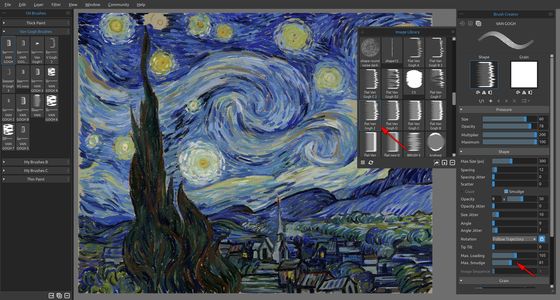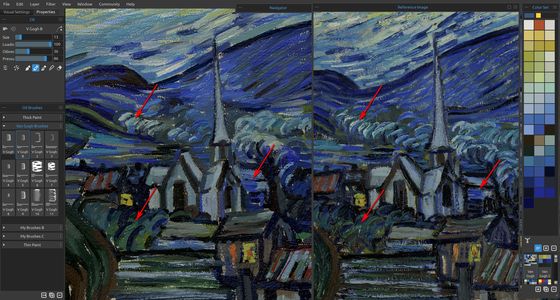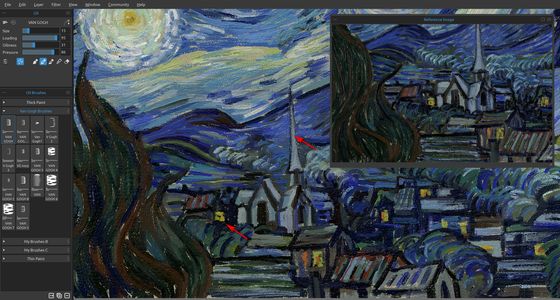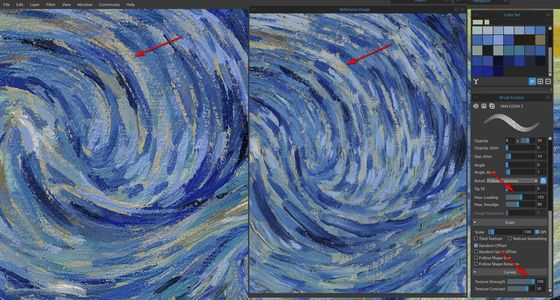The look at the night sky is usually magical, however, at the same time disturbing. The master alone probably felt the disruption and immense power of nature as well, which resulted in painting one of his masterpiece artworks, The Starry Night. Lubomir Zabadal has decided to try to reach this fascinating canvas at least digitally, through Oils in Rebelle 4. Read through the painting process of an expert for traditional art media and assistant professor at the Department Of Creative Arts and Art Education at UKF University, Slovakia.
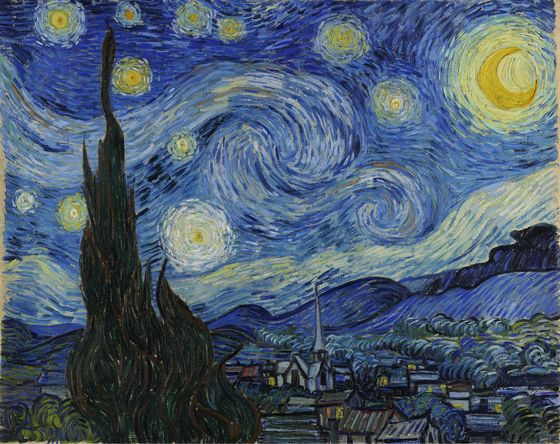 The Starry Night by Vincent van Gogh
The Starry Night by Vincent van Gogh
I started with setting the size of the canvas to be exact as the reference image. In my case, roughly 5200 x 4100px. This gave me a great comparison of brush strokes between the original and my painting. The structure of the originally used canvas can be seen on the copy just partially therefore, I chose one of the Rough papers offered by Escape Motions on their website. You can either sketch by hand or trace the reference image using another layer.
Based on the first impression from my painting process, I changed the canvas color and decreased the Texture size to 45%. Also, I have slightly toned down the Impasto Depth and increased Canvas Visibility in the Visual Settings Panel.
Tracing the colors from the reference image allowed me to create three Van Gogh’s color sets: the basic one and two expanded. I will explain further later, why it did not work well for me to constantly trace colors from the reference image.
I have created my own brush preset, changing the settings of the Flat brush in Rebelle. My goal was to create such a brush that would simultaneously scratch the canvas and load an immense amount of paint along the edges. Later on, the diversity of the original painting forced me to create other brushes based on this one, with a variety of different pastosity and possibilities to scratch the paste.
My strategy was to keep changing between contrast colors, using Paint & Mix mode, with enabled Dirty Brush mode, which leaves traces of previously used color on the brush. Vincent van Gogh worked with interrupted manuscripts alternating between the contrast colors. This technique helped him to create beautiful mixtures in each stroke. It was not helpful and suitable for me to keep tracing colors from the reference image, because the stroke result was different from the original spot, where I picked the color from. Significantly more effective was for me to find correct pairs of colors, add them to my palette, and alternate between these.
I used the Blend mode only a few times. Generally, it was not needed because I achieved a great color mixing with a combination of using a Dirty brush and different Oiliness settings.
Very important has been the sensitive work with stylus pressure. I used a Soft setting for a “dry“ touch.
My goal was to also preserve the empty spots of clean canvas from the original painting. For achieving this, it was necessary to create a dry option of the Flat brush to paint dry spots of canvas color on a new layer. This gave the painting a more expressive impression.
It was very important to keep almost straight strokes while creating curves. Master van Gogh worked very resolutely. I was covering the whole canvas by strokes gradually with a patient alternation of colors from the basic and expanded color sets and occasional tracing of the exact color from the reference image. And after 5 hours of work, this is my result of trying to recreate van Gogh’s Starry Night.
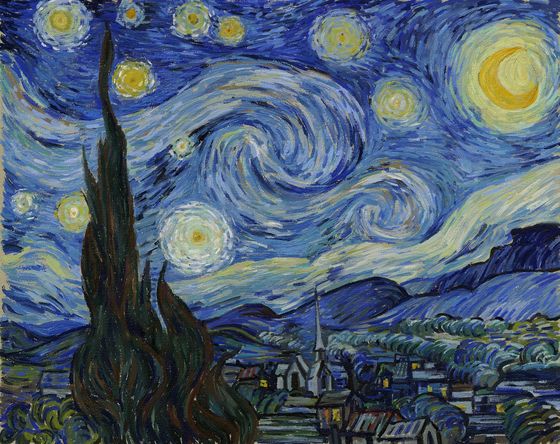 Lubomir Zabadal’s Final Result
Lubomir Zabadal’s Final Result
What do you need to try this out? A good reference image, different variations of Flat brush, suitable palettes that will not be too diversified, sensitivity when it comes to Texture Strength and Pressure settings, and of course, patience.
TOUCH THE MASTER CHALLENGE
Let’s touch the canvas of oil masters together! We challenge you to take your favorite traditional oil painting and try to reproduce the brush strokes of the masters in Rebelle, just like Mr. Zabadal did with Vincent van Gogh's painting. If you create your own Brush Presets or Color Sets during the process, you are welcome to share them with the Rebelle community.
Upload your artwork to our Community Gallery with the tag #touchthemaster and get a chance to win a $100 credit to Escape Motions' shop. We will choose the winner on April 15th, 2021. This way we can all celebrate World Art Day together!
---------------------
The author of the text is Mgr. Ľubomír ZABADAL, PhD. - an expert for traditional art media and assistant professor at the Department Of Creative Arts and Art Education at UKF University, Slovakia.
